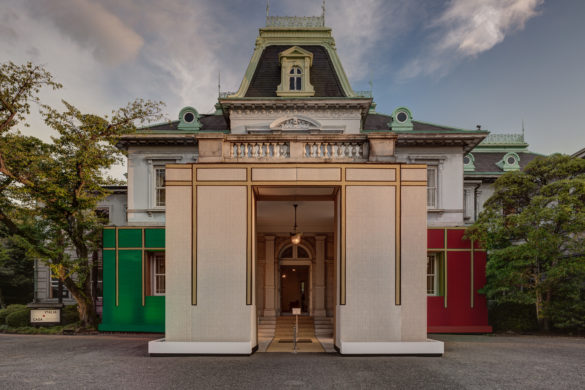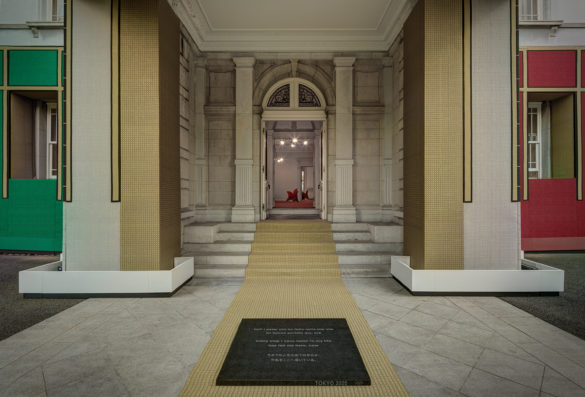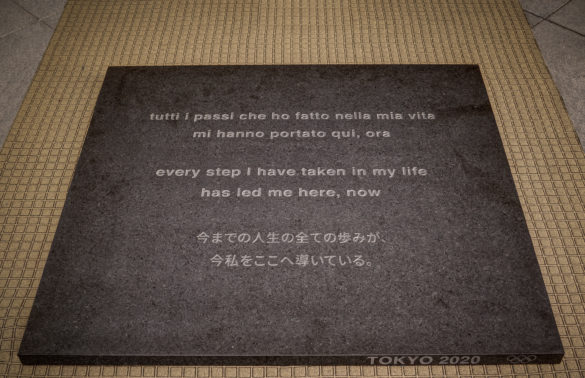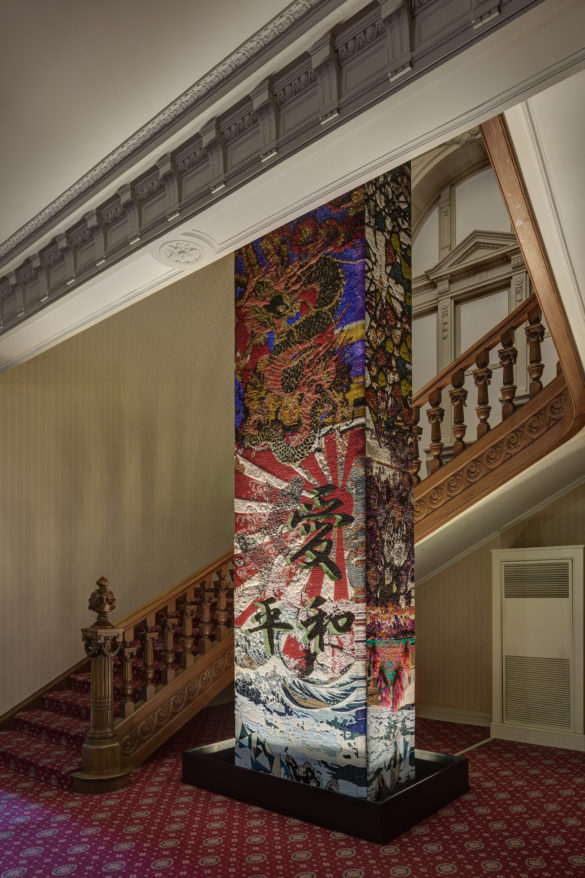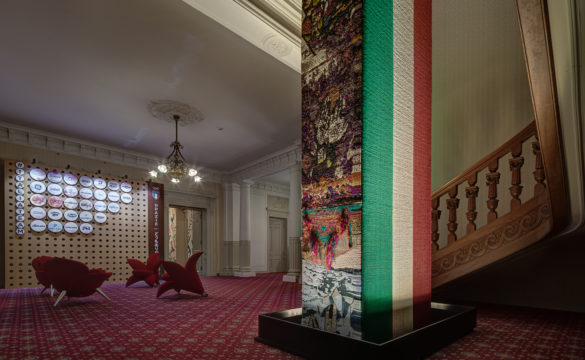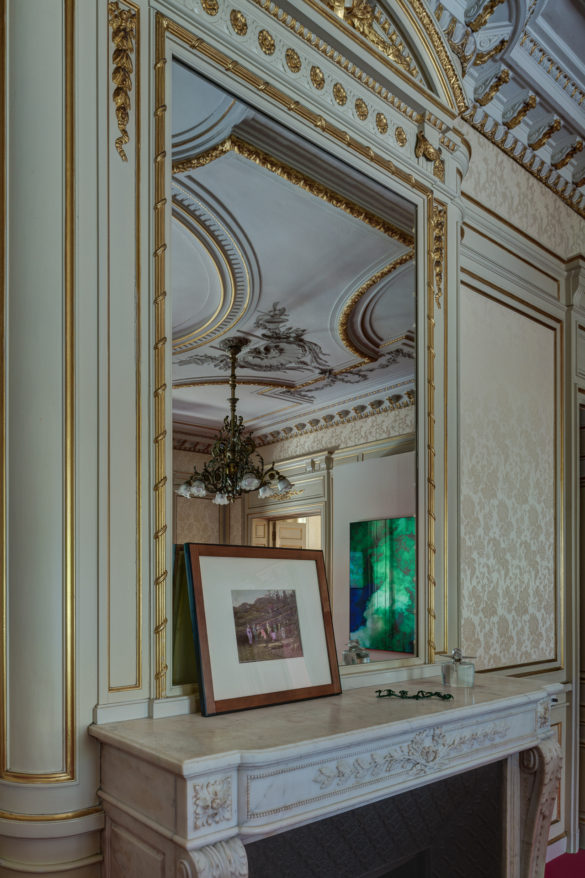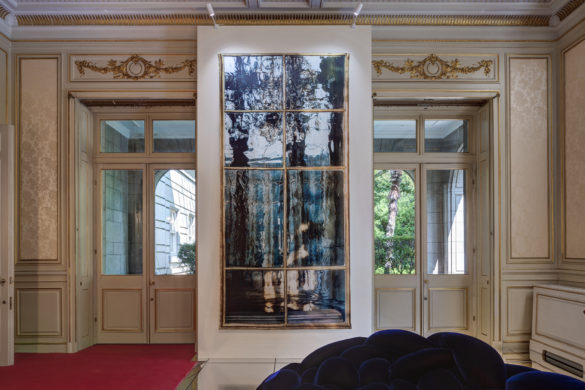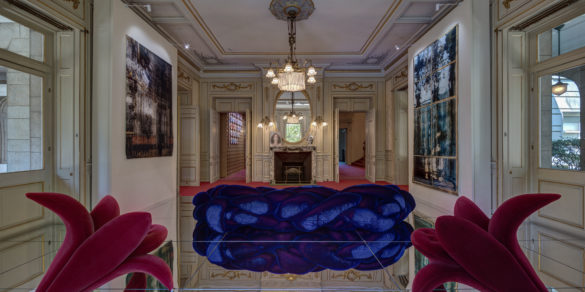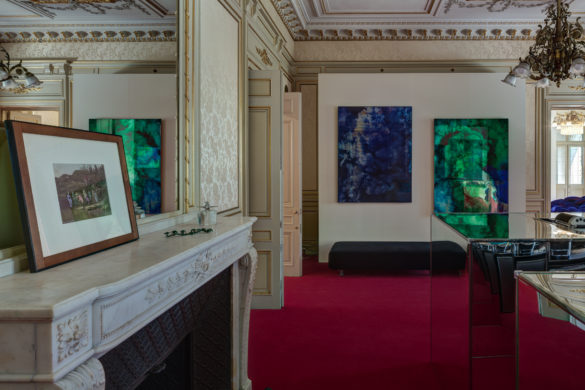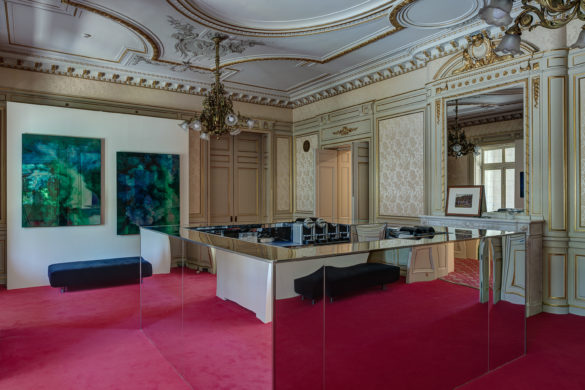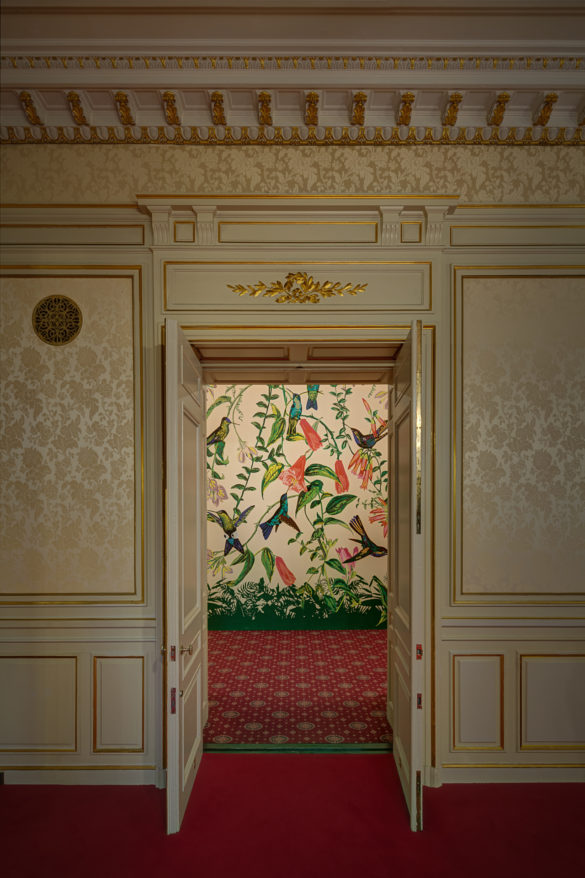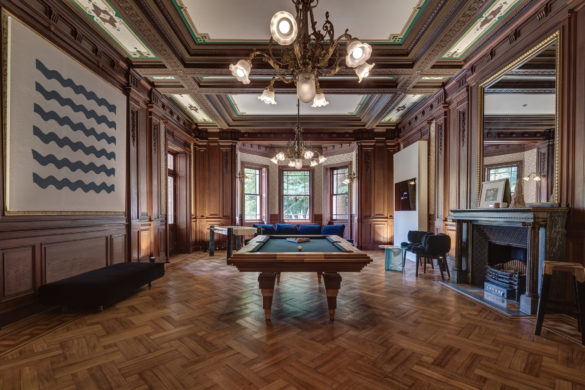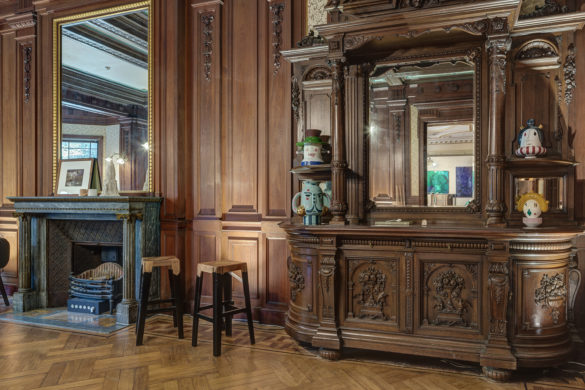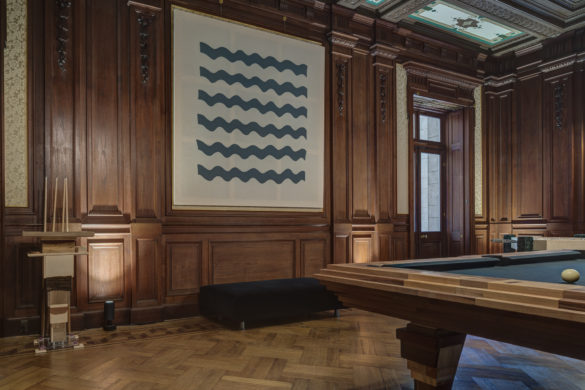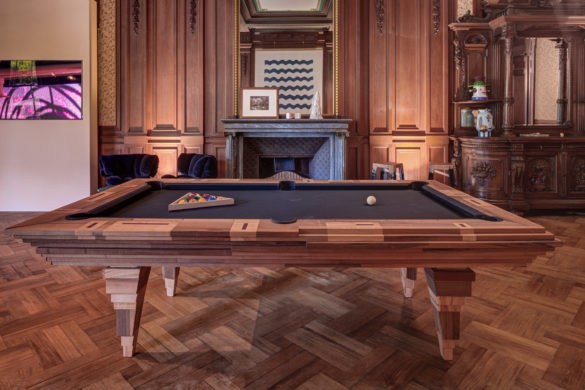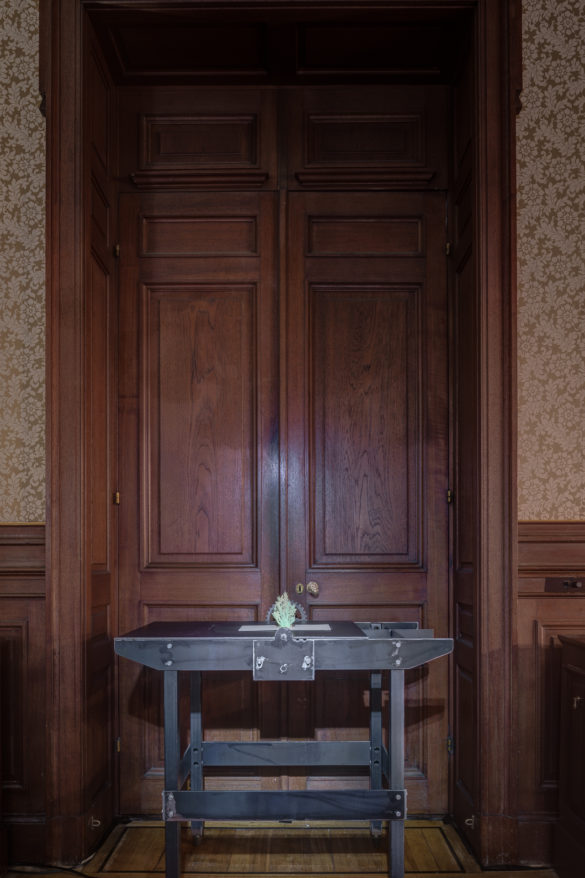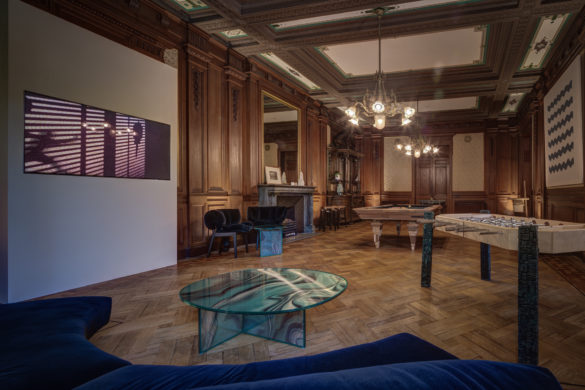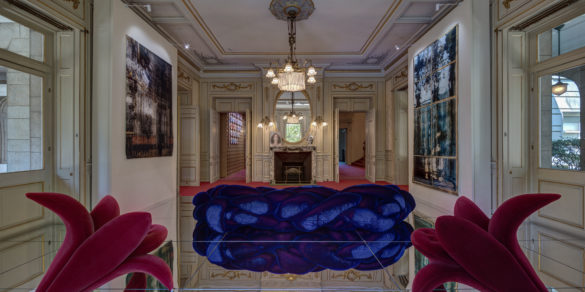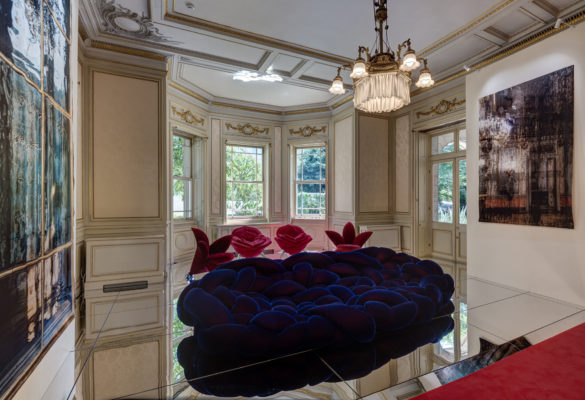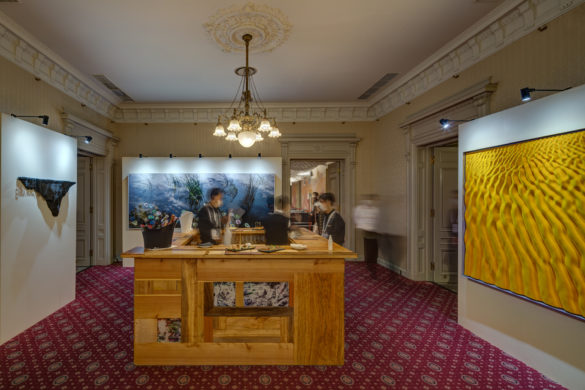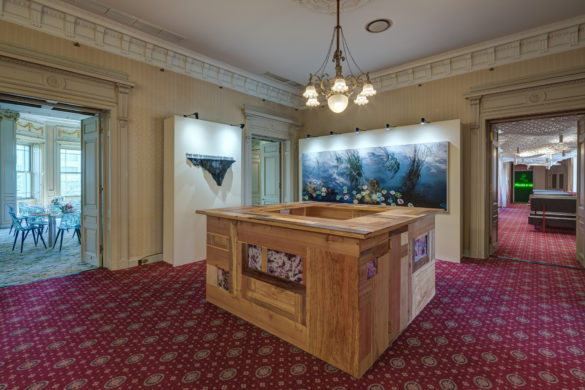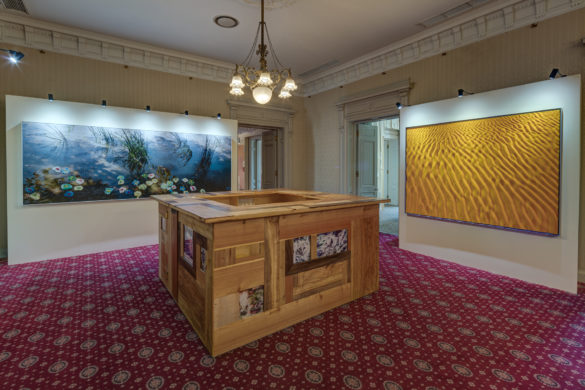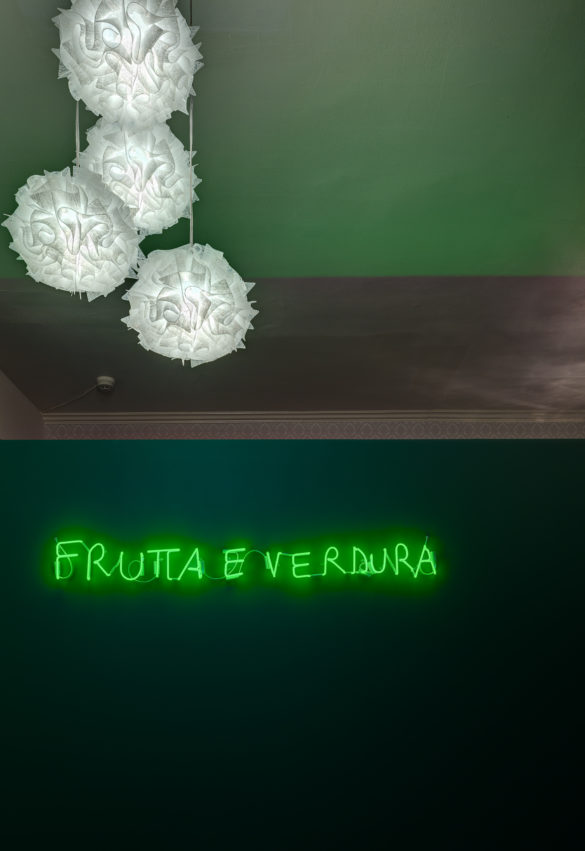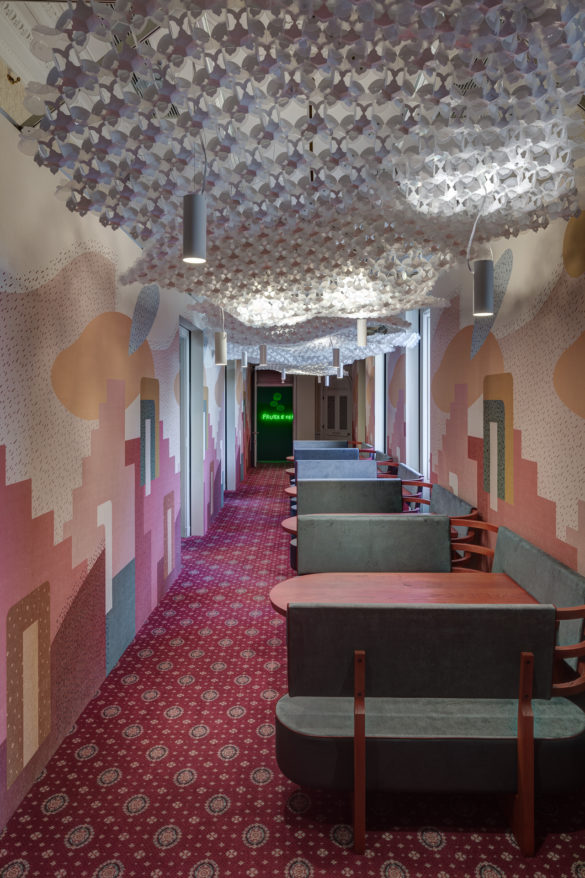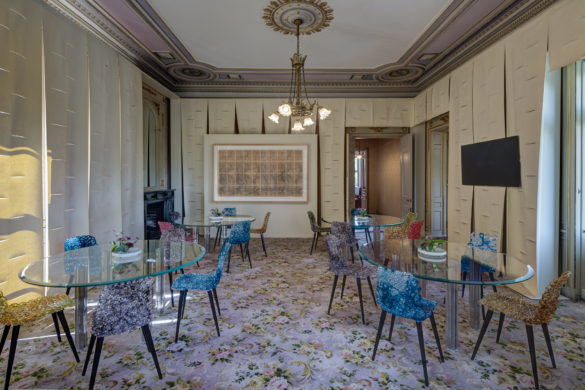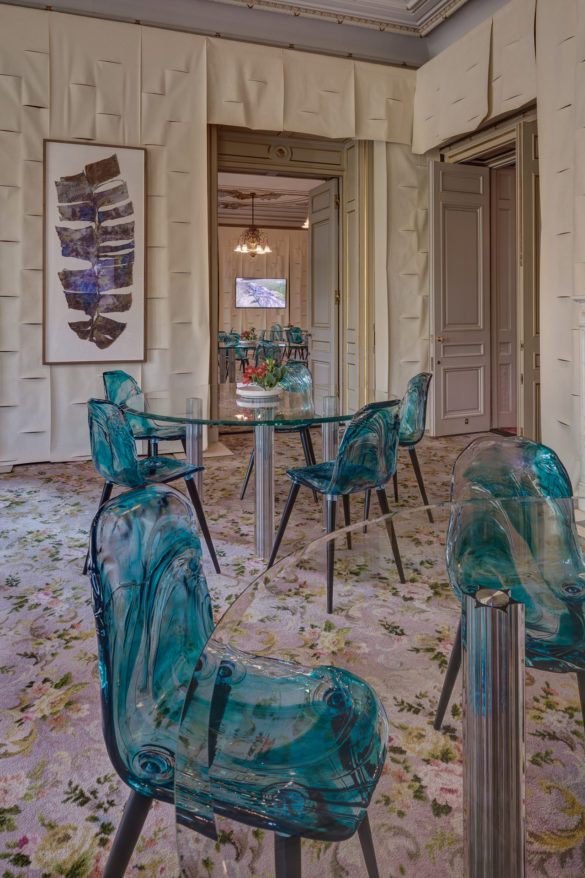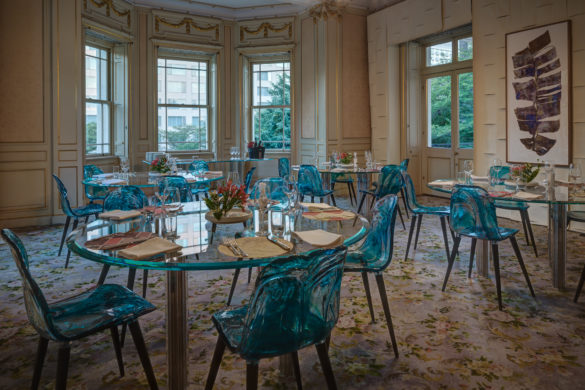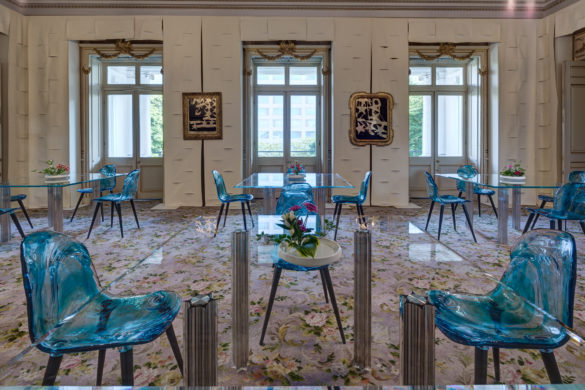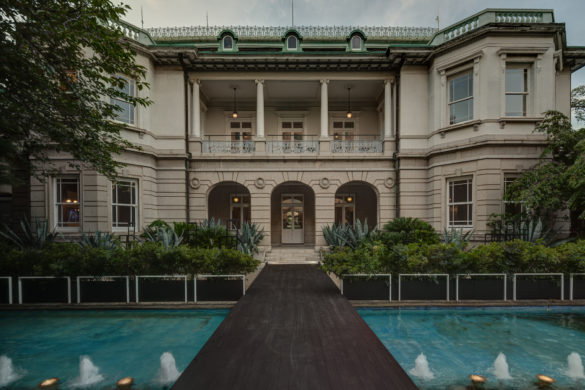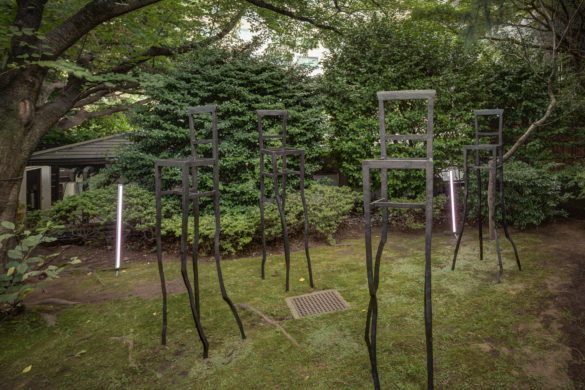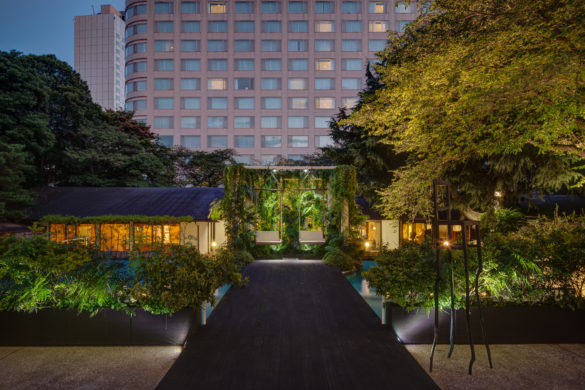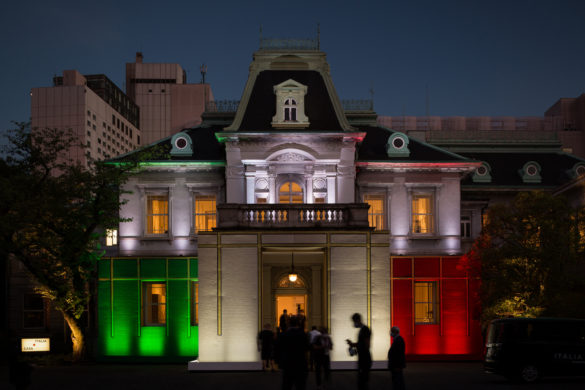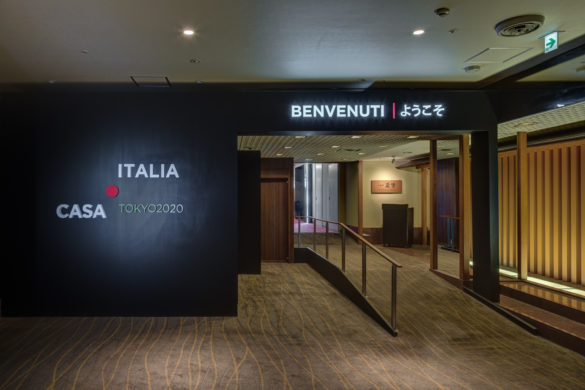For the Tokyo 2020 Olympics, CONI continues its intention to communicate Casa Italia through sport, art and the Italian lifestyle. A journey that began in Rio 2016 with Horizontal, the contamination between cultures at the heart of the project, continued in Pyeongchang 2018 with Prospectum, the Italian point of view in the encounter with different civilizations, to arrive in Tokyo 2020, in an edition dedicated to of Wonder.
The new Casa Italia Mirabilia project interprets the concept of wonder as an authentic sensation that allows us to enter – for a magical moment – into a state of empathy with everything.Wonder is the real point of contact between Italian and Japanese culture because the Japanese suffer the same fascination with everything that represents our country as we do with the civilization of the rising sun.We are therefore faced with a magical reciprocity.
The aspect of wonder developed at Casa Italia is the feeling we feel in the relationship with nature, its elements and the magic of everyday life.
In this case, the term Mirabilia is a reference to the famous rooms of wonders in which between 1500 and 1700 collectors gathered pieces of art (artificialia) and natural objects (naturalia), preserving them together and showing them without placing a difference or hierarchy between them. The objects were indiscriminately called mirabilia, in other words wonderful things.
Casa Italia as a universe that collects, preserves and exhibits the “wonderful”, with a contemporary language capable of enhancing nature, traditions, art, sport at its highest levels.
The Kihinkan – Takanawa Manor House is the headquarters of Casa Italia, the architecture is typical of European houses of the late 19th and early 20th centuries, with a series of rooms linked together – each characterized by a fireplace and a precious decoration on the walls – articulated on two floors. The reinterpretation of these rooms gives life to a series of Wunderkammers. The set-up project takes into account the architecture of the residence, enhancing and respecting its peculiarities.
The path starts from the facade of the house covered with a Bonotto tapestry, made with a yarn obtained from the recycling of plastic bottles, the tricolor inscribes the structure of the typical Japanese house in gold, celebrates our flag, exhibited this year throughout the world as a support to Italy, proposed again as a sign of thanks.
At the entrance, the installation All the steps by Alberto Garutti, specially created, condenses in itself the space and time of life in which one becomes aware of being there, and the wonder that this awareness gives to existence. In this context the work is dedicated to sportsmen and to the reflection on the sum of their efforts, victories and defeats, which led them to the highest step imaginable, but also to all visitors called to marvel at the gift of be here now.
In the space of the staircase stands Bonotto’s Atlas tapestry, which mentions all continents as an elusive core from north to south pole. The seven-meter-high work, created through the ancient artisan techniques of mechanical looms, is a sort of journey into the extraordinary cultural melting pot that characterizes the era in which we live dictated by a new way of living and relating: the cultural nomadism that it makes us all inhabitants of a single space-territory.
The first room amplifies the illusions. In this room characterized by a bowwindow, the works of Elisa Sighicelli help us to understand how art, through small tricks, tries to emulate the mechanisms of reality, in this case the artist uses photography by imprinting it on shiny satin sheets to pretend that we are in the presence of a stained glass window.A mirrored floor enhances the Boa, the historic sofa by the Campana brothers for Edra, framed by Getsuen armchairs.
On the left there is a small roof terrace where the furnishings of Ethimo allow you to sit down, take a break and listen to the audio of the poem Considero Valore by Erri de Luca, desired because with its verses it is able to become a palimpsest of the messages that Casa Italia wants to promote.
The mirror is the leitmotiv of the ground floor, a game of reflections augmented by the works of the artists Goldschmied & Chiari who introduce us to a very important theme: sustainability. Here the works are four mirrors that portray synthetic landscapes, crossed by fascinating but dangerous fumes, as if to tell us that we are actors and victims of the manipulation mechanisms of nature.
In the garden, from the wicker swings by Matteo Thun for Ethimo, the privileged view of the installation Gli Eroi by Giuseppe Gallo, twelve sculptures in which small tree trunks are transformed into gigantic chairs. Here the concept of wonder resides in the verification that every human invention, the chair one of the most effective, is generated by nature and resides in its rules.
The third room, also with bowwindow, is covered with a dark wood paneling in which the fireplace is embedded. The work Surfacing by Ornaghi and Prestinari is a sculpture made up of a typographic press which, opening with a great screech, gives birth to an origami of a paper map, the most literal work on the wonder that Italian art pays tribute to Japanese culture. The wunderkammer is completed by the ceramic sculptures The TheaterHayon is a collection of ironic ceramic characters. The theater of aligned faces speaks through their fun and colorful expressions by Jaime Hayon for Bosa.
The will of the project to interpret wonder as a feeling necessary for man to give rise to thought, and therefore to understand it in an anti-spectacular logic, is evident in the choice of the work Il Mare by Adeaide Cioni. An essential symbol is enough to evoke an emotion without necessarily using fireworks or technology.In this room, among the Essential sofas designed by Franceso Binfarrè of Edra that support the plan of the bow-window flanked by the Liquefy coffee tables by Patricia Urquiola for Glasitalia, the game tables by Hillsideout: the Pool Table is made with a mix of woods from from Italy and the Amazon, a billiard table for domestic use that wants to represent, in its form, the complexity of the Amazon rainforest.The Pirlì, whose name derives from one of the many ways in which the table football is called in Italian, was born from the Hillsideout meeting with the artist Michele Balestra, a magical connection as sometimes happens, between the designers and the artist who, at the time of the meeting, had an aluminum football player figurine with him.
This combination has given life to a majestic, functional and meaningful piece, made with the colored woods of Hillsideout and the lost-wax bronze of Michele Balestra, ancient and modern materials that coexist. The playing surface is suspended on the legs, as if four men were presenting it as a gift. The legs of the table represent ancient columns, capable of supporting the weight of the passion for the game and celebrating the release of tensions and human passions.
On the fireplaces of the rooms we find: the sculpture by Matteo Nasini, a porcelain made with a 3d printer, which processes the brain waves of a sleeping person. In this way we can touch and see the shape of a dream. The small painting by Luca Bertolo Blu Lady is an irreverent portrait of a woman, conducted in a deliberately childish and indefinite style. Elena Mazzi‘s sculpture Becoming With and Unbecoming With # 6 is a fusion between a silver vertebra and a block of glass and signifies the relationship of very delicate balance that exists between body and mind. Finally, the sculptures of Ornaghi and Prestinari seem to fully interpret the fascination of Japanese culture that Italians undergo: Two are indivisible cups held together by their handles, Full is a book with an alabaster teaspoon resting on it. Finally, Giuseppe de Mattia‘s cherry tomato sprig in glazed ceramic is a small delight, everything for nature has value not only the fruit but what is usually waste for man.
The corridor, characterized by the work of Bonotto Garden Colibrì, created on wallpaper by Wall & Deco. Arrive on the upper floor in the gallery the wine bar Pozzo di Fortuna, designed and created ad hoc by Hillsideout (Nat Wilms and Andrea Zambelli) with woods typical of Italy (from north to south) but also of Japan: walnut, larch, maple, chestnut, olive and elm, as well as acrylic, lambda prints, Japanese paper and brass. In German there is the word “Wunschbrunnen” (the wishing well). It is the well of fairy tales where wishes are fulfilled, where the needles of the princesses fall and from which the enchanted frogs come out. Nat and Andrea have dedicated the Italy counter for the Tokyo Olympics to the sign of luck.
This room is dedicated to environmental sustainability and the problematic relationship that exists between nature and its anthropization. Goldschmied & Chiari‘s work entitled Water Lilies is a lake landscape that mentions Monet’s water lilies but, on closer inspection, is haunted by colored plastic bags.
So Mirabilia is not just a project dedicated to nature as a source of wonder, but tries to sensitize the user to preserve it with intentions and facts, as Loris Cecchini‘s Sentimental seismographies sculpture says, quoting Sartre “Every word has consequences. Every silence too. ” Which, not surprisingly, stands on an overturned mountain.
On the wall Aeolian Landform by Loris Cecchini presents us with a new reading of spatiality: physical space is interpreted as biological, organic and vital, but at the same time rational and structured.
To create the work Notes for dried and living bodies that we find in the first lounge, Luca Trevisani subtracts a banana leaf from nature, on which he imprints a colorful design. This experimental procedure allows us to appreciate the fusion between naturalia and artificialia theorized by the Mirabilia project.
The Casa Italia restaurant is divided into the rooms on the first floor, announced by the neon work of Giuseppe de Mattia Fruit and vegetables, as if to lightly celebrate the richness of our famous Mediterranean diet.
The Casa Italia restaurant is divided into the rooms on the first floor. The walls of the main rooms are covered with panels made ad hoc in Alcantara, a sustainable material that has been certified Carbon Neutral since 2009, giving a glimpse of the original paper of the house. The blue green tones characterize the rooms, furnished with the Starlight crystal tables by Glasitalia, designed by Tokujin Yoshioka, also author of the Olympic Torch for Tokyo 2020. The Gilda chairs complete the setting, with a new color designed for Casa Italia, and in the last room Gina chairs with a mix of new colors by Jacopo Foggini for Edra.
These rooms are enhanced by the two works by Flavio Favelli, Paesaggio Borghese 71 and 72, made up of scratched framed mirrors. The scratches reproduce stars and are quotes from the first wonder that man experiences: the starry sky.
In the last room the work Atlas of the different landscapes by Pietro Ruffo which talks about the political relations between man and the earth starting from the objects that testify to this relationship: geographical maps. The borders themselves, which nature does not foresee, are the result of historical events of prevarication, colonization, wars between one people and another and the dragonflies carved by the artist on the map are encouraging wishes for the freedom of each civilization.
The restaurant continues in the 3 social rooms. The large tables in natural solid maple, a wood typical of the Rising Sun, made ad hoc by Studio Effe based on a design by Leftover, are framed by the panels of Alcantara, a soft touch and innovative material, made on a design with overlapping vertical cuts, which create a idea of movement, of overlapping. The setting is completed by the Impossible Wood chairs by Nipa Doshi and Jonathan Levien, a conceptual reinvention of an injection molded structure that preserves the visual and tactile qualities of wood.
In the large corridor, Under a sky of Nuvem lamps by Miguel Arruda for Slamp, an infinitely modular system inspired by one of his sculptures from 1980 was designed as a dreamlike dining car, in which the panorama is represented by the Somewhere wallpaper by Silvia Stella Osella for Wall & Deco. “Play and grow, learn and fall, repeat and train, try and compete or just run to feel free.” This inspires Gio Tirotto’s modular project of the seats and tables of the dining car produced by Alcantara and created by Studio F. The project aims to recall the idea of Speed, like sports cars or athletes’ uniforms, whose graphics and colors are the very design of the bodywork of the bodies that want to escape who knows what.
The last work in order of appearance is the neon by Giuseppe de Mattia Fruit and vegetables, as if to lightly celebrate the richness of the Mediterranean diet and our cuisine that makes us famous in the world.
